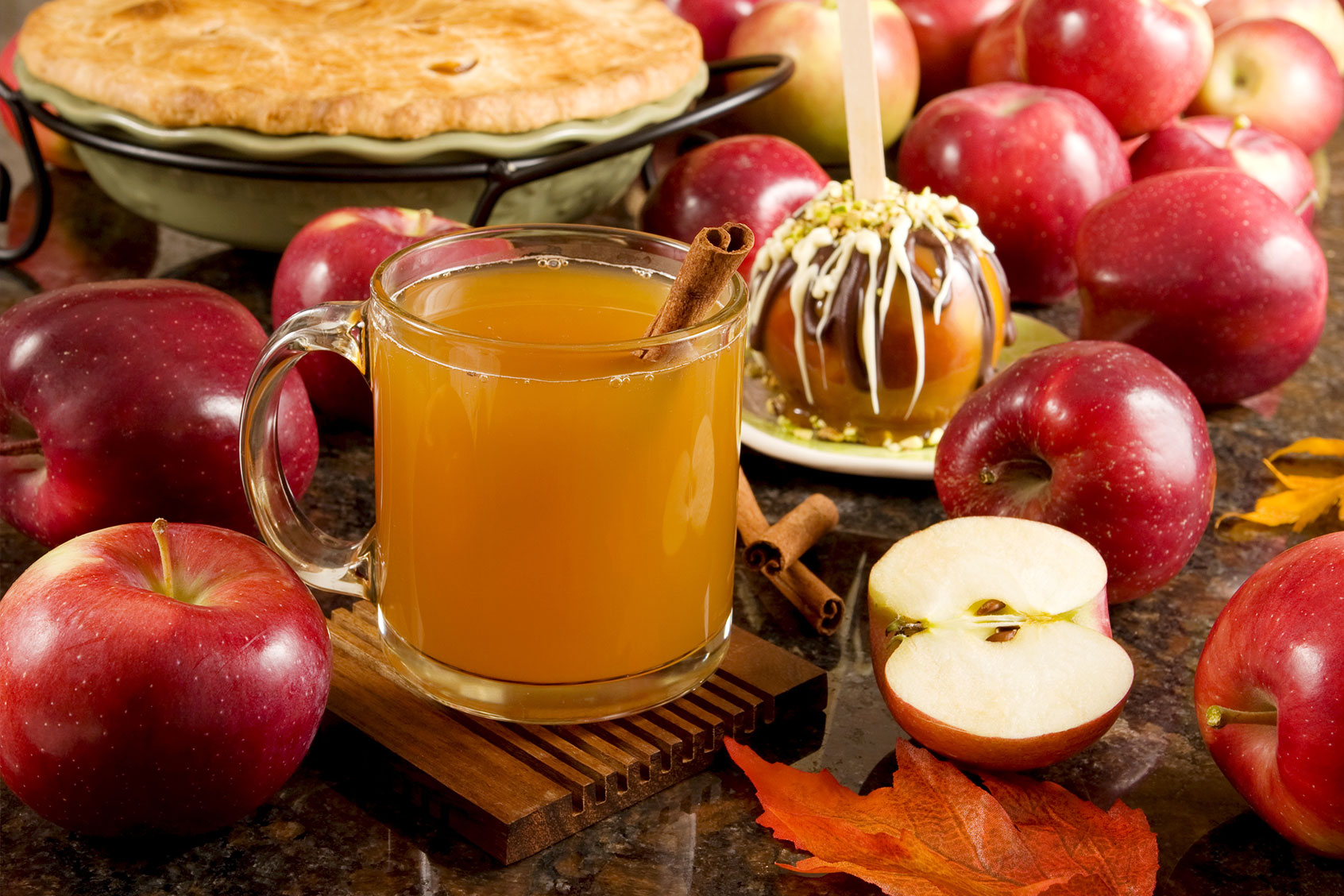For some, apple cider is merely apple juice’s oft-neglected step-sibling, or perhaps something to wash down those wondrous apple cider donuts. For others, apple cider is a unique elixir that represents a world of rich, autumnal flavors, encompassing beverages and cocktails, desserts and savory foods, and everything in between. If you’re unacquainted with ciders, wondering what differentiates it from apple juice, or have yet to utilize cider in a savory capacity, look no further!
What’s the difference between cider and juice?
Apple cider is often darker and sometimes even thicker, while apple juice is translucent. This is because apple cider is fresh, often made in the fall-time, and unfiltered. Apple juice is filtered, pasteurized, and often processed, which is why you can buy apple juice year-round — which is certainly not the case for apple cider. Apple cider lasts just over a week in the fridge and should be enjoyed immediately after purchasing.
Apple juice is also sometimes sweetened above-and-beyond the apple’s natural, inherent sweetness, as well as including preservatives. Apple cider is also a raw product and is minimally processed. In addition, some unpasteurized apple cider can even ferment over time. Did you know: if you do not consume your apple cider within two weeks, it may begin to turn to either apple cider vinegar or alcoholic cider, or just generally go bad?
Be mindful, also — some companies sell the same product interchangeably, but in most cases, it’s clear how to differentiate between the two beverages. Some establishments also sell a spiced apple cider, which is just like normal apple cider, but elevated with mulling spices to help further flavor the drink and give that special fall je ne se quoi. (Of course, steer clear of using a spiced apple cider in the bulk of these savory concepts, which would certainly muddle the flavor profiles).
How to use apple cider in savory applications
Celebrate the best of autumn with these apple cider enriched dishes!
Enjoy this like a Vietnamese-spiced caramel that’s tossed with hot, fried chicken, in which the apple flavor adds a levity that doesn’t otherwise come through. If you’re a heat seeker, feel free to throw in some chile flakes or actual chiles for a really special bite. To make, carefully toss together apple cider, brown sugar, cream, salt and some unsalted butter, cooking it down until it’s thickened and almost jammy. Conversely, use the apple cider caramel as a base in coffee drinks or drizzled over desserts. Toss it with coconut flakes and chocolate for a Samoas-esque treat, or add some flaky sea salt for a crave-worthy salted apple cider caramel that’d be terrific tossed with fresh, hot popcorn.
You’ll be stunned by how viscous and rich this is. Sauté your protein of choice in a flat, heavy-bottomed skillet; skinless, boneless chicken breasts or thighs would be a great option here. When perfectly browned, remove to a plate, and add a finely minced shallot to the skillet. When translucent, add apple cider and white wine and reduce by half. Add stock or broth of your choosing, reduce by half again, and then add a touch of cream and a few pats of butter. Cook over low heat until thickened and beautifully bronzed.
Make your usual stuffing or dressing recipe, but instead of adding milk, water, broth, or stock, use only apple cider. This will add amazing flavor to your stuffing but also won’t make it soggy, allowing for an extra crisping under the broiler, if you wish.
Using a pork butt or shoulder, along with aromatics, vegetables, herbs, and spices, swap out water or stock for cider, which will help to permeate the pork with a bright, sweet flavor and also make the meat super-tender. Enjoy in sandwiches, over nachos, in tacos, or crisped up on the stovetop before being enjoyed over a brightly dressed cabbage salad.
A top tier cozy dish, chicken and dumplings will benefit from apple cider in both the dumping dough and the gravy or sauce itself. This one is a real winner — trust us.
In a super hot oven, roast butternut squash with garlic and onions until tender and slightly browned. Toss into a pot with apple cider and stock, cook down a bit, carefully transfer to a high-speed blender or Vitamix, blend away, return to the pot and add cream, salt and pepper. Serve soup in large bowls garnished with a mountain of freshly grated cheddar cheese and big hunks of crusty bread.
One of the simplest food preparations in the world is easily elevated with apple cider. Take a pound or two of your favorite shellfish, such as mussels or clams, toss them in a big ol’ pot with garlic, onions, and a half-and-half mixture of broth or stock and apple cider. Throw in some clam juice or fish sauce, cover with a lid, and let steam until the shellfish open up, revealing their insides and adding their “liquor” to the simmering liquid.
Add a touch of apple cider to the gravy mixture, the dough itself or the root vegetable mash, and appreciate the alluring look on your guests’ faces as they try to figure out that slight, autumnal flavor emanating from each bite.
You know what they say — an apple (cider) a day!
Want more great food writing and recipes? Subscribe to Salon Food’s newsletter, The Bite.
Read more
about this topic


